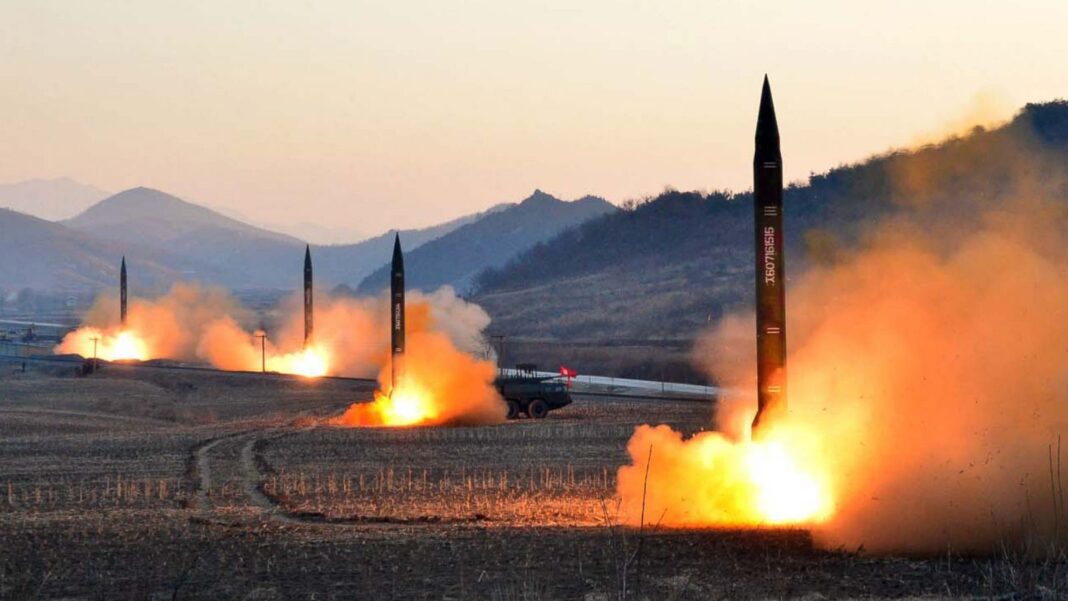Seul, South Korea, July 21: As geopolitics intensifies in Indo-Pacific, a United States nuclear-armed ballistic missile submarine (SSBN) made a rare visit to South Korea on Tuesday.
The visit comes as both nations initiated talks to coordinate their responses in the event of a nuclear war with North Korea.
The visit of the American nuclear submarine to the port of Busan marks the first time such an occurrence has taken place since the 1980s.
White House Indo-Pacific coordinator Kurt Campbell confirmed the long-anticipated event during a briefing in Seoul, where he was attending the first Nuclear Consultative Group (NCG) discussion with South Korean officials.
The NCG was announced following a summit held in Washington in April between South Korean President Yoon Suk Yeol and U.S. President Joe Biden.
This group aims to enhance coordination between the allies in case of a conflict with North Korea, even as some voices in South Korea call for the country to develop its own nuclear weapons—a move opposed by the United States.
Notably, North Korea expressed condemnation towards the NCG, accusing the allies of openly discussing the use of nuclear weapons and warning against displays of military force, including the submarine visit.
Although the specific submarine was not identified by Campbell, it has been officially confirmed by South Korea’s defense ministry as the USS Kentucky, an Ohio-class SSBN.
U.S. SSBNs are known for their stealth capabilities, ensuring their survival and the ability to launch nuclear missiles during a conflict. Public visits to foreign ports are rare for these vessels.
As North Korea’s missile capabilities continue to advance, the United States has committed to intensify its presence in South Korea with the deployment of additional strategic assets. These assets include aircraft carriers, submarines, and long-range bombers, aimed at enhancing regional security and deterrence against potential threats from North Korea.
The U.S. Navy currently operates 14 SSBNs, equipped with Trident II D5 missiles capable of delivering up to eight nuclear warheads to targets as far as 12,000 km (7,500 miles) away.
During the NCG meeting, South Korea’s Principal Deputy National Security Adviser Kim Tae-hyo emphasized the importance of the discussions, ensuring no need for South Korea to develop its own nuclear weapons.
The meeting led to agreements on information sharing, coordination, and planning in the event of a North Korean nuclear attack, with an overwhelming Allied response.
In an upcoming summit to be held in August, U.S. President Joe Biden will meet with the leaders of Japan and South Korea in the United States. The aim of this meeting is to strengthen the trilateral partnership and address regional security concerns.
The allies are also planning to enhance nuclear deterrence and response capabilities on the Korean Peninsula through various operations, exercises, simulations, training, and investments.
Recently, the South Korean President along with leaders from Japan, Australia, and New Zealand participated in the 2023 NATO Summit in Vilnius, Lithuania, where he urged NATO leaders to be serious about the North Korean threat.
Despite North Korea’s threats of nuclear retaliation over the deployment of U.S. military assets in South Korea, both nations reaffirm their commitment to defend against nuclear threats and ensure regional stability.
The situation on the Korean peninsula and surrounding seas remains a major geopolitical concern, with the United States and allies working together to address the challenges posed by North Korea and China.






